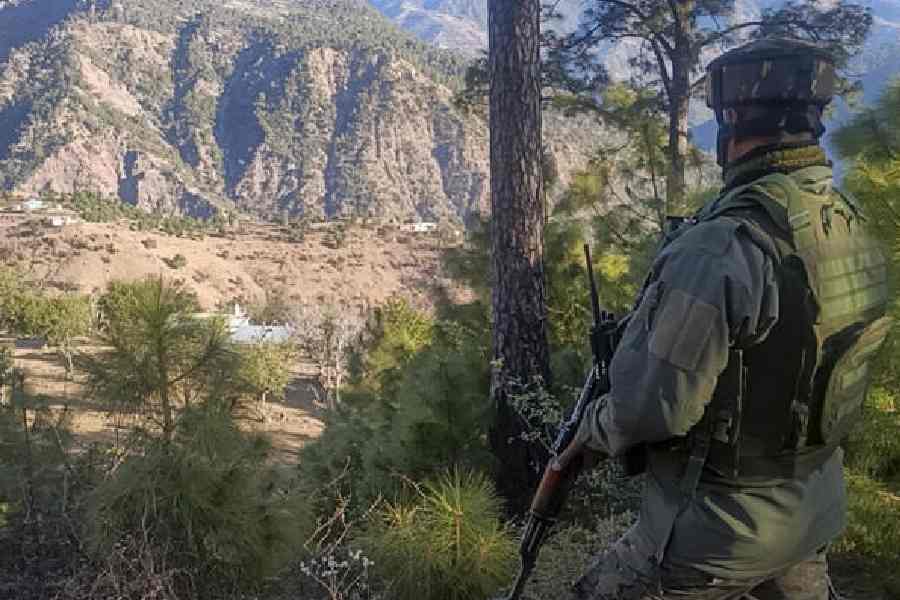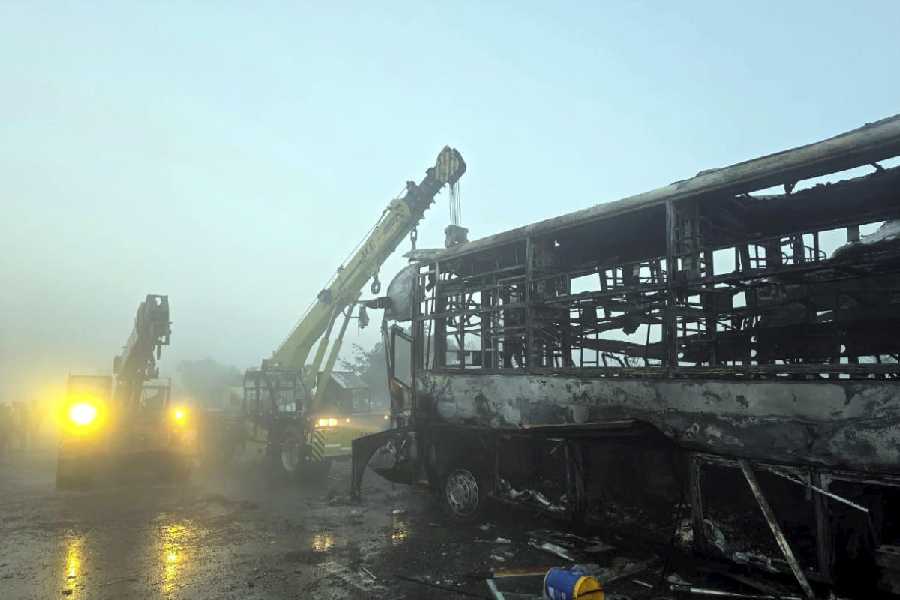A Bhumi Pednekar film almost always comes with meat and meaning. The latest on the list is Bhakshak, meaning ‘predator’, in which the actor plays a feisty small-town journalist who works tirelessly, and in the face of extreme threat, to rescue a bunch of girls in a juvenile home from being abused. The film, directed by newcomer Pulkit, premieres on Netflix on February 9. t2 caught up with Bhumi on being Vaishali in Bhakshak and more.
Bhakshak is the kind of film that is right up your alley and now that I have watched it, I know that few others could have played the part as well as you have done. What is it about this film and this character that spoke to you?
When I heard the narration, I couldn’t collaborate on the film right away because there were a lot of other factors that jumped in and we couldn’t work it out. But the script haunted me. There was this regret that what is the point of me being an actor, and with everything that I have achieved, if I cannot lend my voice to this film? The noble aspect of Bhakshak and the messaging shook me. I told myself that I am a part of the society where this is happening because it is inspired by true incidents.
I am fortunate that finally, the film did happen to me. The spirit of the film essentially is about how we have hardened so much as individuals and as a society that we have stopped feeling, we have stopped empathising with somebody else’s pain and we have stopped hurting for others. We tell ourselves: ‘It is none of our business, it is not my problem.’ That stuck with me.
I saw an opportunity for a performance. I love the director’s (Pulkit) vision. I think he is truly somebody to look out for. He is so wonderful and so promising and all the decisions that he made for the film were so right. It was a no-brainer for me and since it is backed by Red Chillies (Entertainment), I did know that the film is going to get the right release and the most dignified release that it needs. That is what has happened and I am just overwhelmed. I hope that the film finds an audience that champions it because it is a good film.
‘Strong’ is a generic way to describe the women that you have played since Dum Laga Ke Haisha, your debut film, almost a decade ago. Where will you place Vaishali Singh of Bhakshak on that illustrious list?
I have been very fortunate that all the characters that I have played have had agency, they have dared to stand for what is right and wrong. They have had an impact and have brought about change, whether in their lives or within their ecosystem.
I don’t know where I can put Vaishali. She is somebody who I have drawn incredible inspiration from. I resonate with her through and through because of her silent strength, which also acts as an inspiration. She does not belong to that part of society where she can give it back right then and there. She keeps it together, but ultimately she does what she wants. I find her incredible.
You have also been known to be someone like that. You do walk the talk...
As women, we are not always on an equal footing, we don’t have a fair playground most times, irrespective of whatever or how much we have achieved. I come from a very, very privileged environment. So on most occasions, I get to do what I want. But there are also many times when I don’t. As women, we just know how to go through all kinds of situations.
Were there any particular instances in Vaishali’s crusade or the circumstances that she faces in Bhakshak that resonated with you much more than the other aspects?
There is a scene after she meets the antagonist (Bansi Sahu, played by Aditya Srivastava) for the first time and she comes back home petrified. She is not a heroic person, she is not a cop who deals with people of this calibre all the time. So it is a lot for her. She comes home fearful because she is human and the minute she enters, there is a confrontation with her husband (Arvind, played by Surya Sharma) because dinner is not ready. There is a very powerful line where she tells him: ‘Ek mutthi chawal aur ek mutthi dal daal kar seeti lagana hain bas. Itna bhi nahin kar sakte? Bachhe ho?’
It is one of my favourite scenes. Bhumi, the person, connected with that. That is because there are such defined gender roles in our society.
Certain things are just expected out of women. Even I had those expectations out of my mother when I was a child until I knew better.
I would be like: ‘Why doesn’t my mom drop me to school? Other moms do it.’ And then I realised it was a personal choice. If you can do it, great. If you want to do it, even better.
With Bheed and Afwaah last year and now with Bhakshak, would you agree that you are conjuring your Bhumi-verse of meaningful and message-driven cinema? Is the natural inclination to go more for these kinds of roles?
I love both! Even though Thank You for Coming had my character belonging to urban India, I felt her problems were as real as Vaishali Singh’s problems. I also feel that a modern girl’s problems are often looked upon as not serious or not real and that upsets me because those are my issues also. I am that girl (of commercial cinema). I enjoy that genre a lot. I had Pati Patni Aur Woh in the same year as I had Sonchiriya. I don’t want to limit myself.
One thing is very clear — all my characters need to have agency. The film might not have that at all times because everything does not need a certain type of messaging, but my character definitely should.
When we spoke last year, you picked a list of films that you are emotionally attached to. Is Bhakshak an addition to that list?
It is right up there on that list. Bhakshak is very personal to me. I am not some crusader or some saviour. I don’t see myself as that at all, but art has a lot of power and I truly want to start a conversation with this film.
When I was shooting Sonchiriya, I took on the responsibility for an ashram in that area (Chambal). About 200-plus of those children come from backgrounds that need love and support, and now they are my family. With Bhakshak, I felt it was about time that I did something on a subject that is so close to home.
Vaishali is a simple, middle-class girl on the surface but there was, I am sure, a lot to master in terms of her dialect and body language. What did you have to do?
There was a lot of prep that went into it. I enjoyed it because it was after a while that I did a film where I had to get into the language, the body language, what she wore... I had a blast! I don’t know that milieu at all.
Fortunately for me, I had a director who knew that and co-actors who eased me into that world.
I worked very hard on my language because the film has set pieces where I was reporting (as a journalist) and the words had to flow... they weren’t just dialogues. A lot of it came from my heart as well, especially the last monologue, which is a one-shot-one-take scene. There was no teleprompter, no cuts... it was five minutes of just her looking into the camera and speaking to the audience. There were a lot of such pieces. So I had to work hard on the language.
Physically, I wanted her to be an everyday girl. She looks a little different from how I look right now and that was a conscious choice that we made.
Her wardrobe consists of five kurtas, two sweaters, one shawl, and three-four pyjamas. It just had to be like how an everyday girl would live.
Also, I had to learn how to ride a scooter. I am not the most comfortable person on a two-wheeler. I learnt a little and the film also has a full-blown chase scene where she is riding her scooter. There were cameras put right in my face. There was a lot happening.
And obviously, I had to learn what journalism is. I had to fall in love with the profession. I had to understand that there is a very thick circuit of independent journalists that crack stories on this level. They get the information first and then it moves upwards. I had to understand how the system works.










